

There is perhaps no concept that so divides the world of dressage than ‘contact’. For some the desire for lightness seems to overwhelm all other considerations. However, the plain fact of the matter is that the devotees of lightness seem to produce many more articles and manifestos than they do successful horses, and the masters of the German training methods, manage to produce many many athletic, balanced, graceful horses. What the lovers of lightness don’t seem to realise is that contact is not just about what is going on in the horse’s mouth.
Let one of the foremost exponents of the German system, Jo Hinnemann explain:
“I really want to emphasize that a rider first rides a horse with the legs and seat; then come the rein aids, as a support to the seat and legs. These three things together subsequently determine the quality contact that leads to the complete harmony and understanding between the horse and rider.” (The Simplicity of Dressage, page 61) This teaching is further amplified: ‘Coming away from the bit?’ When you read the German expression for the first time, Abstossen vom gebiss, you may be inclined to think that this ‘coming away’ is a major fault. However, coming away from the bit is decidedly not the same as not taking the bit at all. In this instance, Hinnemann views coming away as a sign that the horse completely accepts the bit. The horse allows the impulsion of his hindquarter to flow over his back and through his neck to a closed but ‘living’ mouth. He trusts the bit completely. At the same time, the horse lightly and almost imperceptibly comes away from the bit. The rider notices the contact become even nicer and lighter and the driving and restraining aids are optimally communicated. The horse doesn’t display any resistance in his body. The horse accepts the bit as part of his body so to speak. Thus, coming away from the bit is actually the optimum contact a rider can have with the horse’s mouth.”
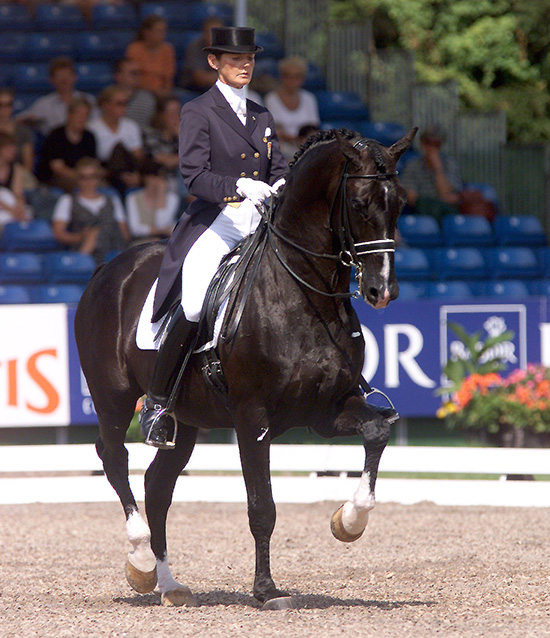
Coby van Baalen and Ferro
(Simplicity of Dressage, page 65)
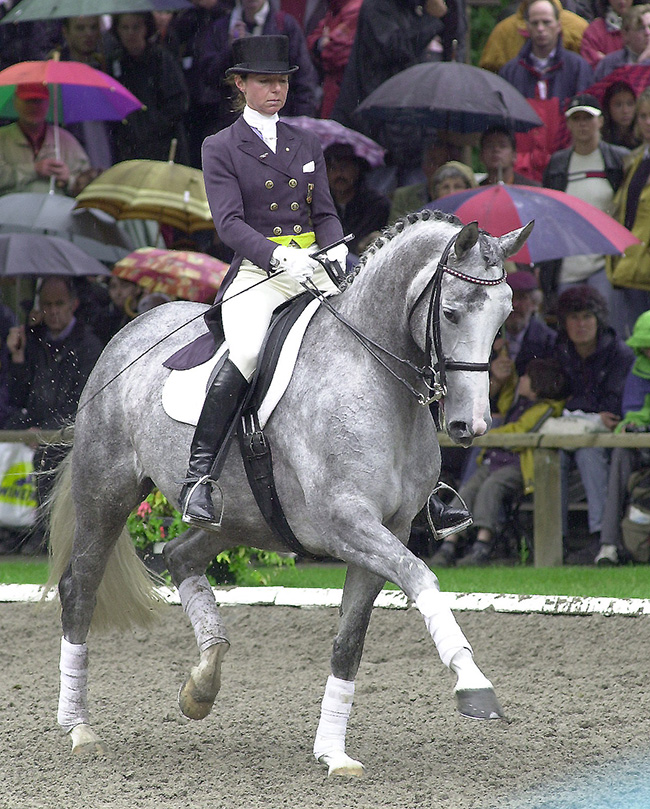
Monica Theodorescu and Renaissance Fleur. Monica is the current German dressage coach for Germany.
Let’s look at what ‘the bible’ has to say about contact:
“Contact is a soft and steady connection between the rider’s hand and the horse’s mouth. While training progresses, the horse should be ridden more from behind into the elastically yielding hand. The contact will then be even on both reins when riding straight ahead, and a little stronger on the outside rein when riding on a circle. To achieve a contact the reins may not be moved backwards. Contact has to be the result of well-developed propulsive power. When forward driving aids are applied the horse has to move forward into the contact.”
(The Principles of Riding, page 163)
According to Clemens Dierks, this is one of the most misunderstood concepts in dressage:
“I say it all the time, the word in German is anlehnung, translated correctly into English it means ‘to lean on’. Now the horse has to look for the contact – from behind with the driving aids, you bring feel into the horse’s mouth through the back and neck. The horse without a consistent contact can never be steady, it will always look uneven, irregular, or argumentative.”
“Some people who look mainly for lightness, confuse lightness with self carriage. Through real self-carriage, the weight comes off the forehand of the horse, and this makes your contact automatically more light. Most riders just have their horses on a long rein and they say ‘look, I have a light horse!’ And that is a big confusion – but one thing for sure, these horses on the long rein with no contact, will never perform. They don’t go through, they don’t accept the bit, they don’t go onto correct contact which can only be achieved by forward riding from behind into the hands.”
“Sometimes a bit more contact is better than less contact, depending on the ability of the horse to carry himself. It is only support to maintain steadiness, not support for anything else. Lift and cadence, that all comes from behind, not from riding with the hands. The hands – the half halts – basically just control the tempo, they achieve attention from the horse, but they have no function in lifting the horse off the forehand – that is the function of the driving aids. But if you have a long rein and you drive against it, then you only create speed. Sometimes you must drive against a more restraining hand to create the lift, and through that you put the weight slowly to the hindquarters and that is the way lightness will increase. But lightness just in the hands will never achieve anything, it must be the lightness of self-carriage.”
It seems that Clemens is plagued with students who do one clinic with him, and only remember that he said ‘take’ and they never remember that he just as often said ‘give’ – they then go away saying, oh that Clemens Dierks he drove my poor horse mad he just said take, take, take …
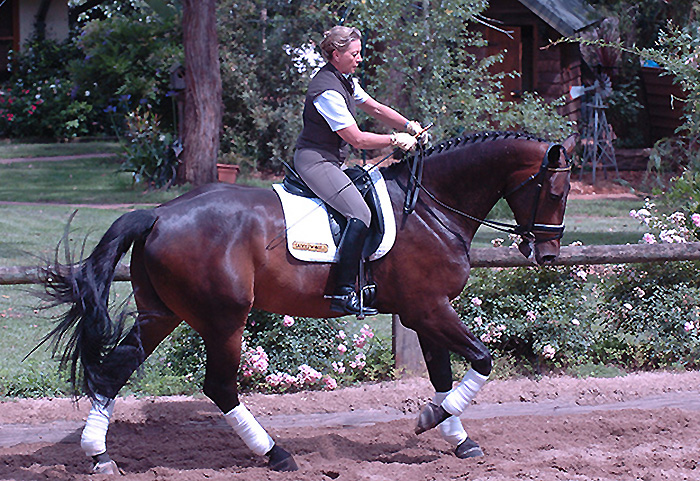
“If I ever say ‘take’ always at the same moment I say ‘give’ immediately – any take which does not give, creates a pull and a pull just doesn’t work.”
“I just watched Ulla Salzgeber teach our riders, and the first thing she said was take the reins, take more contact, to get the horses more steady, more onto the hindquarters. Self carriage and lightness are products of the horse shifting its weight to the hindquarters.”
“When I first came to Australia, everyone had a light horse, and when I picked up the reins, every horse reared up! Not one horse was accepting the bit.”
Is part of the problem with contact in Australia, that so many of our riders have such unsteady seats that they keep hitting the horse in the mouth without meaning to?
“That is just bad riding. Every part of the rider’s body must be independent, but joined, each part must be able to work independently. If the rider is rigid, and bounces in the trot, and the hands bounce with that, then the horse can never produce anything. You must have body control, be able to keep your body relaxed and still and quiet, with hands that are independent or you cannot expect the horse to accept the contact. Why should he let the rider hit him in the mouth?”
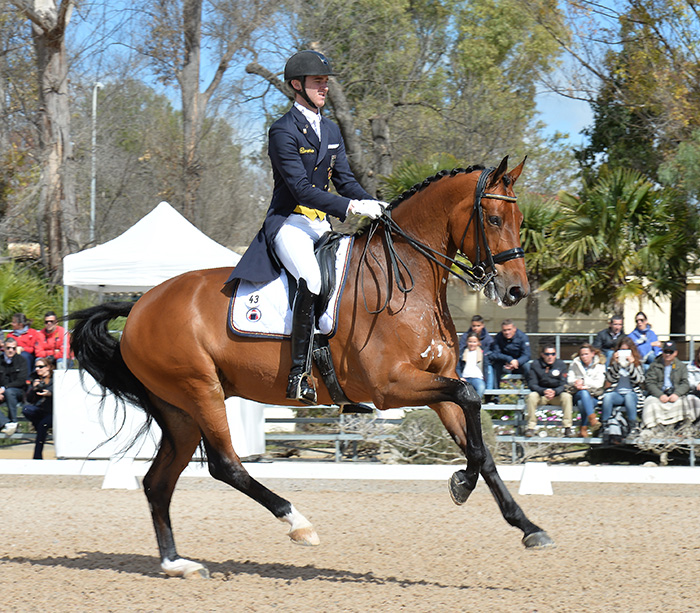
New stars on the German team, Sönke Rothenberger and Cosmo
“A correct contact is when the horse takes and seeks the contact. It takes you where you want to go with minimal aids. The horse you have to kick, will never perform, it has to respond on light aids to basically pull you through a Grand Prix test. That’s where I confuse some Australians, when I say, ‘the horse has to take you there’ in Germany, the last time I worked with Herbert Rehbein, he screamed at Falk Rosenbauer, who is one of the better German professional riders, ‘das pferd zieht nicht richtig’ literally that means ‘the horse does not pull correct’ – probably in English you would say – take you there. It is so hard to translate. If I say the horse has to take you there by taking the contact, and want to go there, some riders interpret that as, I told them the horse should pull. It is a problem with the words in the English language, but contact is really a concept that causes so many problems – you see it every time you go to a dressage competition.”
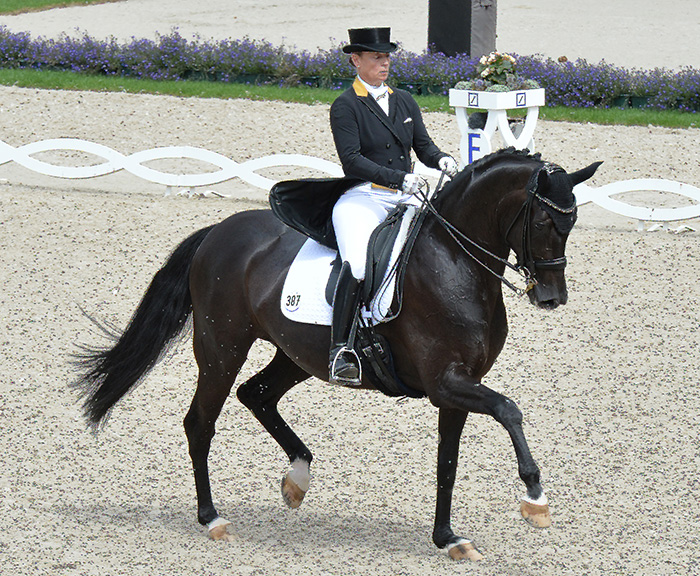
The horse has to take you there, Isabel Werth and Weihegold
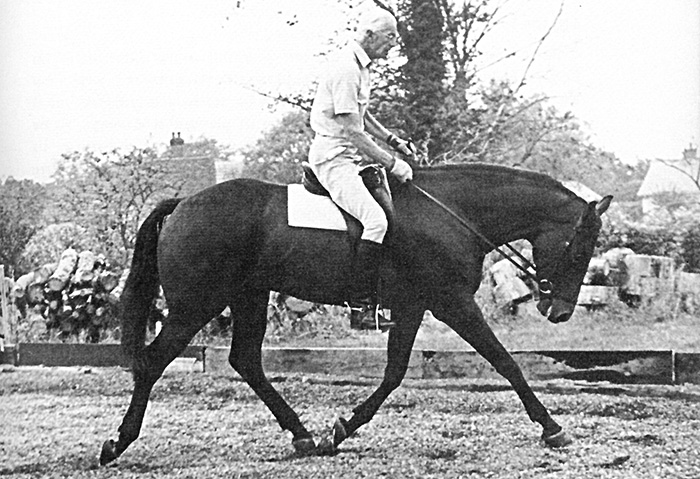
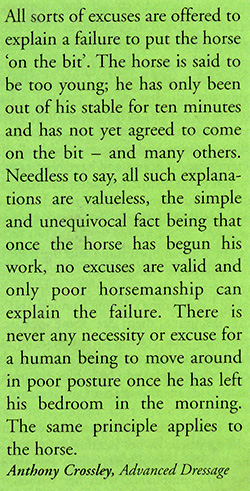
International Horse Breeders has many exciting new stallions available this season:
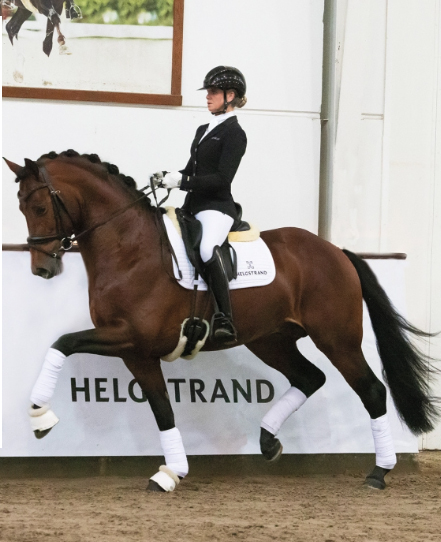 About You II
About You II
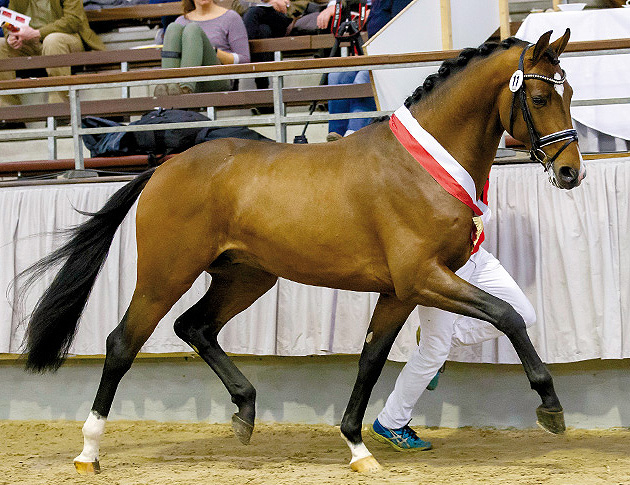
Escalito
AND MANY OTHERS…
Go to www.ihb.com.au

